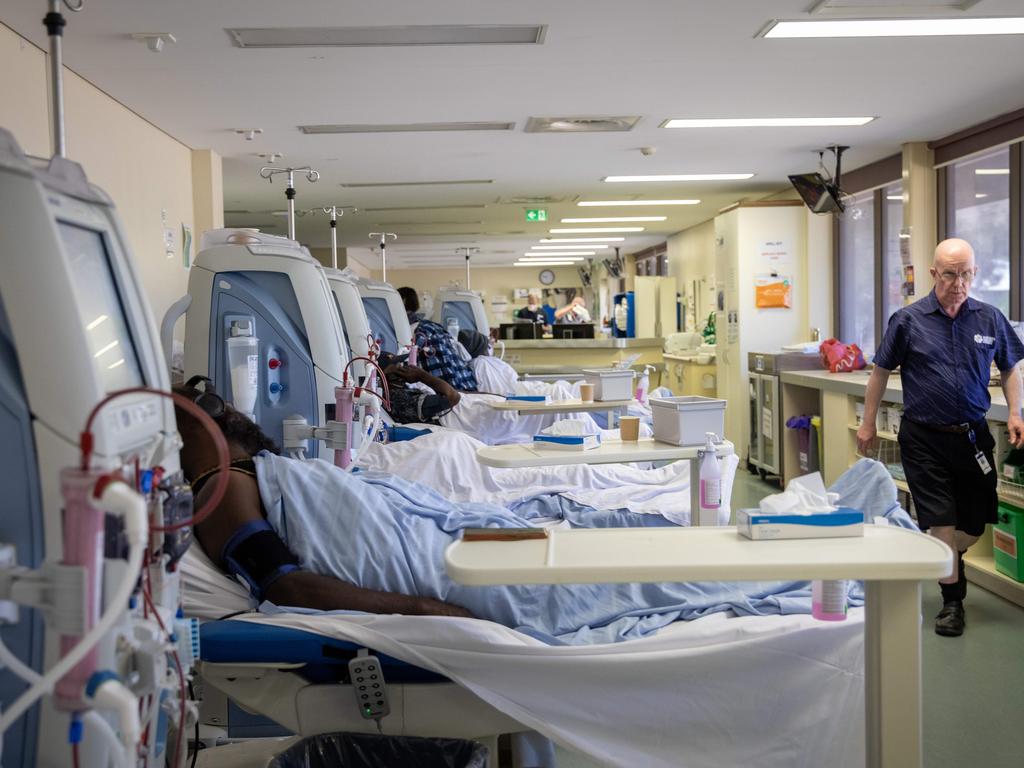Overhaul health system to fund prevention: AMA
The health funding system isn’t equipped for an ageing population and rising chronic disease, and should be reformed into a single-payer system for certain populations.
Australia’s health funding system is ill-equipped to meet the challenge of an ageing population and rising chronic disease, and should be reformed into a single-payer funding system for certain populations, says the Australian Medical Association.
It has issued a discussion paper calling for the new model to incentivise healthcare providers to focus on prevention rather than the bulk of funds going to acute treatment in hospitals.
The single-payer model would be applied to healthcare for the elderly and those with chronic diseases including type 2 diabetes, where many complications that frequently land patients in hospital – sometimes with serious infections requiring amputations – could be avoided through timely preventive care.
The proposal comes after The Australian published devastating accounts from patients and doctors caught up in the type 2 diabetes epidemic, as overloaded hospitals struggle to cope with continual admissions from diabetes complications largely due to a failure in the primary care health system, leaving thousands of patients vying to access preventive care.
The AMA said it’s a classic example of how Australia’s complex health funding system was resulting in “fragmented, uncoordinated, and sometimes suboptimial care”. It comes amid a massive primary health workforce crisis that rural doctors say is the worst in 45 years.
“The complexity of the healthcare system – with multiple funders of services across a public-private system and shared governance across several levels of government – has made it challenging to address systemic barriers,” the AMA paper said.
“These layers of complexity have resulted in a health system that is inefficient, with duplication and gaps in service delivery. It has also created a system where there is little incentive for governments collectively to prioritise preventive measures and invest in resources that could potentially reduce hospitalisations and acute episodes of care, which is likely contributing to the increased burden of chronic disease in Australia.”
The paper comes as new elective surgery data reveals public hospital waiting lists are at their longest in at least 20 years.
An estimated 1.3 million Australians already have type 2 diabetes, a disease strongly related to lifestyle and socio-economic factors in which people become insulin resistant and their blood sugars rise to dangerous levels. The disease is forecast to affect one in 12 Australians by 2050 and cost taxpayers $45bn a year.
Central Australia is Australia’s epicentre of type 2 diabetes, where one in 100 people has end-stage kidney failure and 40 per cent of the population have the disease, now commonly being diagnosed in children.
Acute care doctors in Alice Springs told The Australian they are operating as “the ambulance at the bottom of the cliff” in hospitals and begged for primary care to be bolstered to prevent people from developing complications, especially from diabetes, which affects 80 per cent of patients in Alice Springs Hospital’s ICU.
“Australia’s health system looks less and less like the system needed to care for a growing and ageing population with increased complex and chronic disease,” the AMA discussion paper says. “A significant change in the funding arrangements is needed to ensure the sustainability of our health system. This will require funding models that not only tackle existing health issues, but incentivise funders to prioritise prevention and early invention.”
A single-payer model for targeted populations such as the elderly and the chronically ill would work by one level of government funding all aspects of care wherever it is delivered.
The AMA has suggested a number of models, but one may be modelled on a program such as the healthcare provided for veterans through a single-payer funding model provided by the Department of Veterans Affairs.
The model would be differentiated from an NHS-style system, because in England the NHS is not only the funder but also delivers all services, which is not what is being suggested here.







To join the conversation, please log in. Don't have an account? Register
Join the conversation, you are commenting as Logout